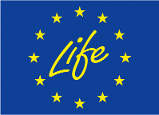Packaging and sustainability of dairy products: a question of balance
Let’s start from a fact: the environmental impact of packaging is much lower than that of dairy products.
This, of course, does not justify over-sizing solutions (over-packaging). Especially when the goal is only to increase the volume of products to ensure greater visibility on the shelves. If over-packaging is an environmental (also) problem, the exact opposite (under-packaging) is even more dangerous. The reason is simple: a packaging that does not fulfil its functions risks generating food waste with disastrous repercussions in economic, social and even environmental terms.
As shown in the graph, packaging solutions that guarantee the least environmental impact are designed to optimize the use of materials in relation to the performance of shelf life, transportability, accessibility. It is, in fact, a balanced packaging, which is proposed with the right measure: enough and what is needed.
What happens in the case of over-packaging? The environmental impact increases linearly. This is due to an excessive and unnecessary use of packaging materials.
Whereas in the case of under-packaging? The environmental impact unfortunately increases exponentially. This, for dairy products, is due to the food waste that is generated by the lack of ability of the packaging to ensure the correct storage and accessibility of products.
One area of packaging, often taboo, but very important to promote sustainable production and consumption systems is communication. Packaging is in fact the informative interface that connects the consumer with the product. It is therefore essential to acquire knowledge (including environmental) on the content and its container. Through packaging, the consumer must be informed about storage methods, how they are prepared and administered, and how they are disposed of. Packaging must guarantee the best information, the most useful and necessary.
In order to be communicatively balanced, packaging must not exaggerate in its promises but must balance what it says with what it contains and conveys, avoiding the overcrowding of information that confuses the beneficiary.
Source: Politecnico di Milano

